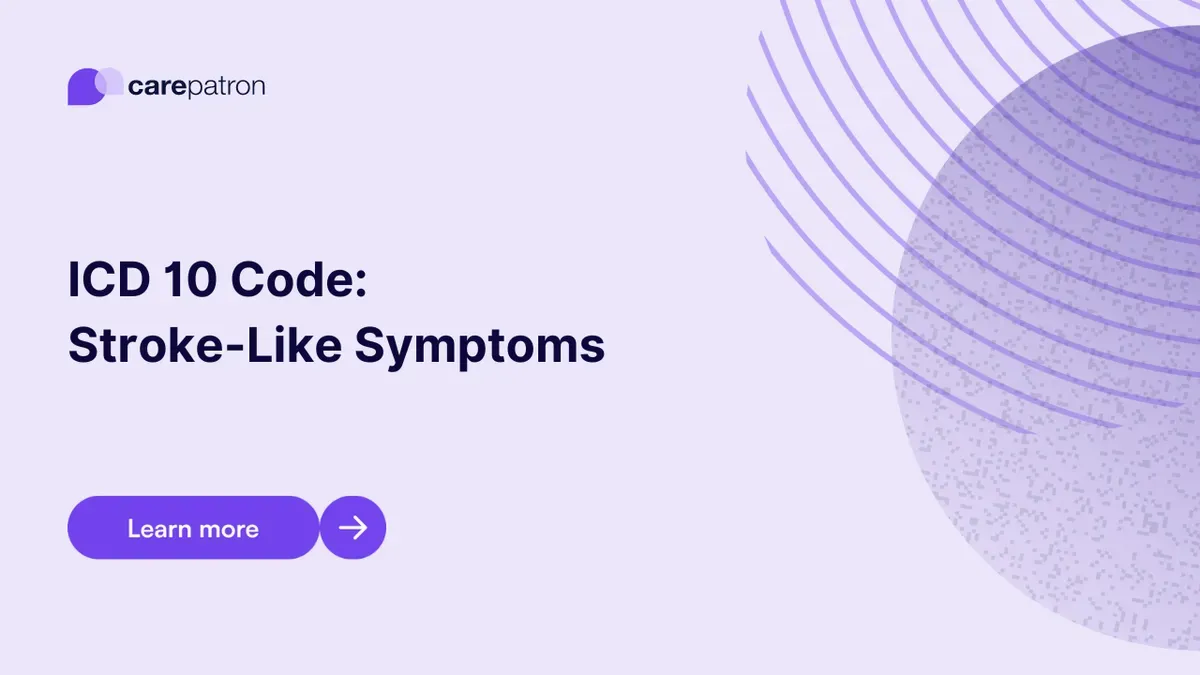
Stroke-Like Symptoms ICD-10-CM Codes
Discover essential ICD-10 Codes Used for Stroke-Like Symptoms. Ensure accurate diagnosis and treatment with our comprehensive list.
Use Code
Commonly asked questions
Use Stroke-Like Symptoms ICD codes when a patient presents with sudden neurological symptoms, such as weakness, speech difficulties, or vision problems, resembling those of a stroke or related conditions.
Common treatments for Stroke-Like Symptoms Diagnosis Codes depend on the underlying cause. They may include medication to prevent blood clots in cases like TIAs or surgical interventions to address blockages or bleeding in strokes.
A diagnosis code for Stroke-Like Symptoms signifies a specific medical condition or set of symptoms to facilitate communication among healthcare professionals and for billing and documentation purposes, aiding in accurate diagnosis and treatment planning.
EHR and practice management software
Get started for free
*No credit card required
Free
$0/usd
Unlimited clients
Telehealth
1GB of storage
Client portal text
Automated billing and online payments
